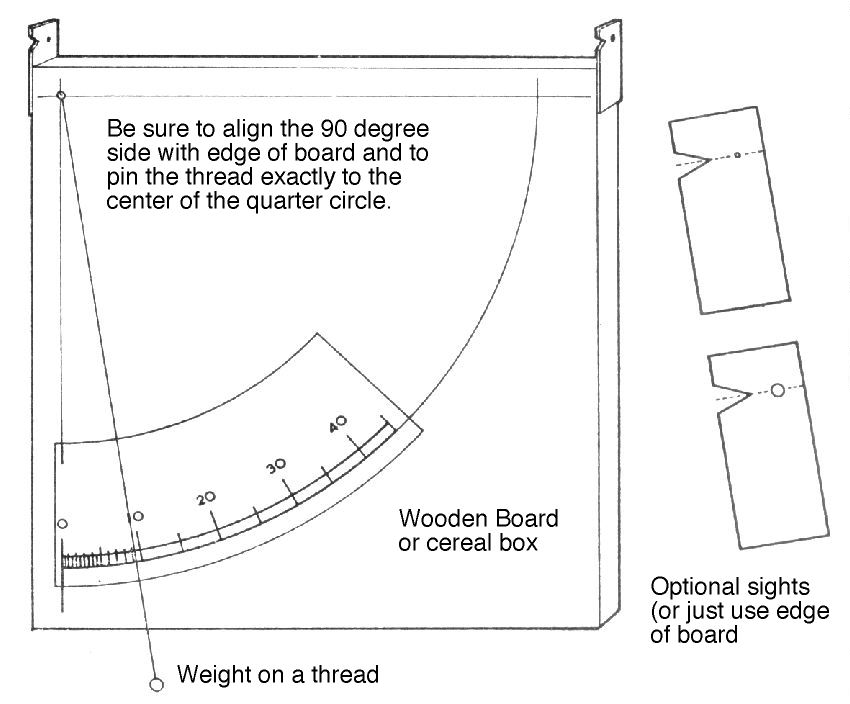 In this exercise you will make a quadrant and use it to determine your latitude north of the equator by measuring the altitude of Polaris, the North Star. Just follow the following steps.
In this exercise you will make a quadrant and use it to determine your latitude north of the equator by measuring the altitude of Polaris, the North Star. Just follow the following steps.
 In this exercise you will make a quadrant and use it to determine your latitude north of the equator by measuring the altitude of Polaris, the North Star. Just follow the following steps.
In this exercise you will make a quadrant and use it to determine your latitude north of the equator by measuring the altitude of Polaris, the North Star. Just follow the following steps.
If you have not received a copy of the quadrant (it looks like a quarter circle with 90° scale on it), click here and print it out.
Glue or tape the quadrant scale onto a board (or cereal box). Be careful to position the 90° line of the scale to be exactly parallel to the longer edge of the board. As an option, you can add two sights as in the illustration, but it is okay just to sight along the edge of the board if it is straight.
 Pin one end of a thread to the center of the quadrant arc, and tie a small weight to the other. The thread must be long enough so that the weight is beyond the scale as in the illustration.
Pin one end of a thread to the center of the quadrant arc, and tie a small weight to the other. The thread must be long enough so that the weight is beyond the scale as in the illustration.
Find the North Star by using the Pointers of the Big Dipper. Sight along the edge of the quadant to the North Star while tipping the quadrant slightly so that the weight hangs freely. When the weight stops moving, slowly tilt the quadrant to be vertical and press the thread to the quadrant and hold it and read the scale to 0.1° (The smallest marks are 1/4 °). Record that measurement, and then make 7 more measurements, and record them for a total of eight. Now discard the first three measurements as practice (or any three which are way out of line with the others). Calculate the average of those five observations, and enter them and their average here. That should be very close to your latitude (see illustration.)
